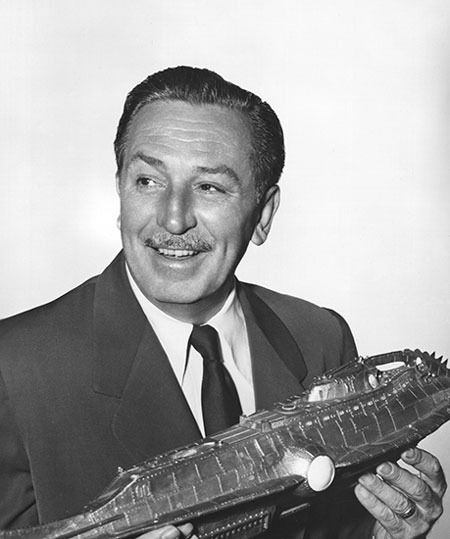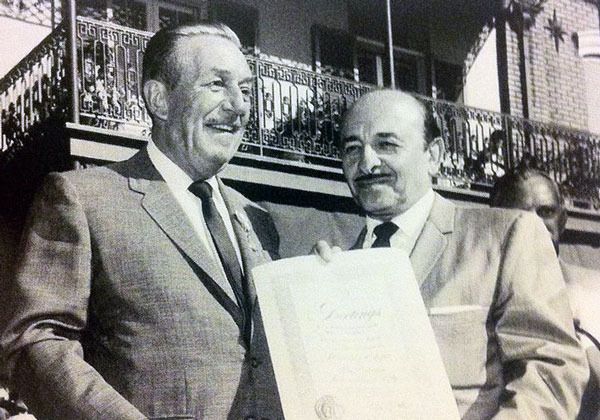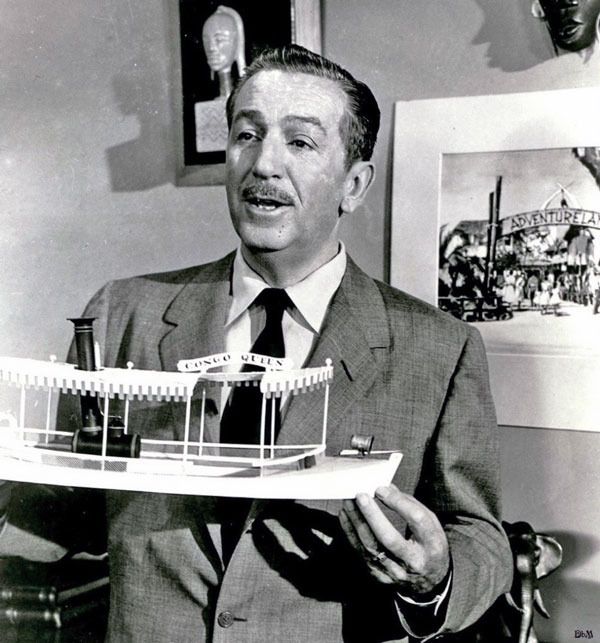As far back as those earliest of Disney fan communities, debates raged over a myriad of topics. One of the oldest debates is, “Would Walt have liked/wanted this?” It’s a question and a justification that has been used many times as an attempted (and I stress attempted) trump card to win an argument. “Walt would have hated Paradise Pier,” or, “Walt would have loved Mystic Manor.” People say things like this (I’ve even said things like this), and it is always, of course, their opinion. But every now and then we’ll hear a Disney executive use a Walt quote to justify changes, especially the less popular ones. “Walt said Disneyland would never be completed,” said random Disney employee about random project. Well, yeah. But that doesn’t mean Walt would sign off on crap, either. Walt didn’t advocate change for the sake of change. He advocated change for the sake of improvement. [Editor’s note: That doesn’t mean that everything Walt signed off on was great. But what didn’t work he was quick to fix or replace]
Not too long ago on a social media site not that far away, I read a tweet from a chap by the name of Matthew Gottula (@DLthings - follow this guy if you aren’t already). He was listening to a KPCC interview by Alex Cohen of Scott Trowbridge, Portfolio Creative Executive at Walt Disney Imagineering. Trowbridge, the man behind the infamous fire-breathing dragon of New Fantasyland in 2012, is in charge of bringing the revered Star Wars saga to life inside the Disney parks. A not-so-simple task.
 |
| Star Wars Land Concept Photo © Disney |
Ever since it was announced that Star Wars Land was going into Disneyland, the topic has sparked a fierce debate as to whether or not it belongs in Walt Disney’s original Magic Kingdom. When asked what Walt would have made of all this, Trowbridge responded with, “I hope he would be happy. You know one of the things that Walt Disney did, was he always said, ‘Disneyland will never be finished,’ right, ‘as long as there’s imagination in the world Disneyland will continue to change and evolve and grow.’ ” Now for you true Disney geeks out there, that is not Walt’s exact quote. But I’ve goofed a few times while trying to collect my thoughts during an interview, so he gets a pass there. However, should he have even dropped that quote? While I don’t think he was necessarily using it to justify the decision to put Star Wars Land in Disneyland, I do think he was using it as a bit of a safety net, like some higher-ups in Disney have been known to do. Many of the more ardent Disney fans have grown weary of that tactic years ago. But, it did make me wonder: Would Walt have liked Star Wars Land? Hmmmm. Let’s look at a few facts.
Walt dabbled in science-fiction: In the early 1950s, Walt decided to make a film based on the Jules Verne classic 20,000 Leagues Under the Sea. Walt was intrigued by many of the novel’s sci-fi elements, particularly the depiction of submarines and self-contained underwater suits. Given Walt’s penchant for quality, everyone knew early on that the production was going to be expensive. They would need to construct an entirely new soundstage on the studio lot, complete with a huge tank for underwater filming. The initial budget was set at three million dollars, but it would soon increase to 3.3 million. Then 3.8 million. Then 4.2 million. Walt was sure his brother Roy would object, but he never did. “That’s the first time he ever did that on a picture,” Walt remarked. “For some reason, he believed in it from the very start.” Roy had confidence in Walt. He knew that while the studio didn’t specialize in sci-fi, Walt would make sure the movie was done right. Upon release, 20,000 Leagues Under the Sea earned more than triple its budget, and went on to win two Academy Awards.
 |
| Walt holding a model of the Nautilus from 20,000 Leagues Under the Sea Photo © Disney |
Walt loved outer space: Walt Disney, the enduring futurist, first developed a fascination with outer space after the “World of Tomorrow” exhibit debuted in the 1939 New York World’s Fair.
On March 9, 1955, Disney’s 48-minute documentary Man in Space aired on ABC. Walt had allocated a large amount of funds to produce three different shows highlighting the importance of man exploring the next great frontier. The show was wildly popular, even being re-run more than once (which was unheard of back then). It was eventually released theatrically, garnering an Academy Award nomination. Rumor has it President Eisenhower requested a copy so he could present it to the Pentagon.
The series’ second entry, Man and the Moon, aired later that year. The final installment, Mars and Beyond, aired in late 1957. One of the more notable contributors to the project was German scientist Wernher von Braun, who had been brought to the United States during Operation Paperclip. Operation Paperclip was the codename for a secret operation that entailed the U.S. military extricating scientists from Germany towards the end of World War II. Von Braun would team-up with Disney on several occasions, and developed a strong admiration for Walt himself. In fact when von Braun, a genius in his own right, was asked once who he felt was a genius, his response was, “Walt Disney.” When the reporter laughed and referred to Walt as simply a cartoon maker, von Braun stated that when he and Walt were talking about the space program one day, Walt had asked him questions so sophisticated, not even NASA asked him questions of the same caliber 10 years later.
 |
| Walt with Wernher von Braun Photo © Disney |
Walt was pro-expansion: All of those super cool new lands at Disneyland (Bear Country/Critter Country, Toontown, New Orleans Square) didn’t all come after Walt passed. Walt was very much alive when New Orleans Square–Disneyland’s first new land since opening day–debuted on July 24, 1966, about five months before his passing. However while it debuted in 1966, the earliest concept sketches of a New Orleans area by Imagineers can be traced back to 1957, only two years after Disneyland opened. Early construction of the “Old New Orleans” section began in 1961, which quickly came to a halt thanks to all of the work that needed to be done for the 1964/65 New York World’s Fair. When ultimately completed, the cost of the square (which incidentally is not shaped like a square) totaled 15 million dollars. All of Disneyland cost $17 million just 10 years earlier. The Mayor of New Orleans, Victor Schiro, was in attendance for New Orleans Square’s opening. “It looks just like home,” he beamed. “Well," Walt replied, “I’d say it’s a lot cleaner.” Zing!
 |
| Walt with Victor Schiro Photo © Disney |
So while New Orleans’ French Quarter can hardly be referred to as “existing IP,” it does illustrate that Walt was clearly not against the idea of adding new lands to his Magic Kingdom. And speaking of existing IP...
Walt didn’t mind using existing IP, ya know: When Disneyland first opened in 1955, it consisted of four major lands, as well as Main Street, U.S.A. Basing entire lands on existing intellectual property wasn’t a thing back then, although at one time Adventureland was going to be called “True-Life Adventureland,” named after Disney’s own nature documentary series. It didn’t happen, of course, nor would that have really been the same thing. Because of that, we’ll focus on the early attractions.
Autopia | Canal Boats of the World | Circarama | Jungle Cruise (then called the Jungle River Boat Ride) | King Arthur Carrousel | Mad Tea Party | Main Street Cinema | Main Street Vehicles |
Mark Twain Riverboat | Mr. Toad's Wild Ride | Mule Pack | Peter Pan's Flight | Santa Fe and Disneyland Railroad | Snow White's Adventures (also known as Snow White and her Adventures) | Space Station X-1
Space Station X-1 was basically a painting which simulated the view of earth (more specifically, the United States) from 90 miles up. Main Street Cinema is, a cinema. The Main Street vehicles are conveyances designed by Disney Legend Bob Gurr. The Santa Fe and Disneyland Railroad (now known simply as the Disneyland Railroad), is, you guessed it, a train. The other original attractions were: Autopia, Circarama, the Mule Pack, and the Jungle Cruise. I suppose one could make a case to exclude the Jungle Cruise as “original,” since it not only incorporated themes from Disney’s True Life Adventures, but also drew inspiration from the 1951 film The African Queen. But we won’t count “inspirations” for the purposes of this article. The Canal Boats of the World was originally meant to take you on a charming boat tour of miniaturized versions of famous cities from around the world. Instead, thanks to the infamous lack of money and time leading up to the park’s opening day, guests got to see hills of barren dirt, and listen to boats too loud to allow music or narration.
 |
| Walt showing off a Jungle Cruise boat model Photo courtesy of DisneyByMark — © Disney |
The rest of the attractions were in fact based on “existing intellectual property.” Whether it was a Disney entity (the animated films, which themselves were based on pre-existing stories/fairy tales), or classic literary characters like King Arthur or Tom Sawyer, stories from popular culture were being utilized to offer immersion into their environments. So much so that early guests were confused when riding Snow White’s Adventures. “Where is Snow White?” they would ask. You never saw her, because you were her. She wasn’t added to the attraction until 1983.
In conclusion, you can see that Walt personally produced works of science fiction. He was deeply fascinated by outer space, fully believed in expanding his beloved Disneyland, and had no problem utilizing existing IP. Given all of this, would Walt have liked the addition of Star Wars Land? The answer is, “Beats me!”
Interesting article. I would have to say that Walt would not approve of Star Wars Land as it is NOT an original Disney concept.
ReplyDeleteUsing IP yes - Using someone else's IP - NO
ReplyDeleteYou both realize that Disney Princesses were not Disney IP, right? They weren't creations of Disney. So an entire land based on characters he didn't create is the core of Disneyland.
ReplyDelete^^^^ he may not have created the origins to those stories of the princesses but they did however create the image of the princesses and reworked the story to their liking. Most people associate the Disney version of those stories and not the original fairy tales.
ReplyDeleteTrying to compare that to what Star Wars is, is not the same. Star Wars was an already established entity that they just slapped their name on.
This comment has been removed by the author.
Delete